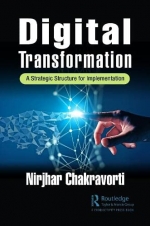Tab Article
With the advent of digital technologies, society is reshaping itself radically. In the last decade, digital technologies have brought fundamental changes in the industry and business environment. The holistic socio-economic and industrial changes are a result of general-purpose technology aspects of digital transformation. Transformations due to general-purpose technologies are rare which has inherent capabilities of self-transformation to bring long-term benefit across the entire global business environment. After steam engine, electricity generator and printing press, the recent development of digital transformation have created an opportunity with extensive sustainable and incremental influence for disruption and renovation. However, the most important difference between digital transformation and the previous general-purpose technologies such as steam engines and electric generators is the pace at which technology is being penetrated across the globe. To cope with the accelerated speed of global digitization, the digital transformation process should be accepted, adopted, and adapted across society and business. To conceive and adopt digital transformation in an organization a multi-dimensional strategy is needed. The book illustrates a strategic structure that covers Digital Challenges for Industries, Applicability for Digital Transformation, Digital Transformation Framework, People & Organization Structure, Capability Delivery Activities and Life Cycle Benefits.
How will a business embrace digital transformation? How will it formulate a digital transformation strategy? How will it invest in digital technologies? To answer all the questions, a strategic structure is created which can provide a guideline to the business to create a framework for digital transformation that includes strategy, enabler, process, governance, and funding. The exponential growth in data capacity (storage, process, and communication) due to rapid digitalization has created infinite business opportunities and brought different dimensions to the business. Digital platforms have created alternative business models by deconstructing the traditional value chains. Agile concepts driven by design thinking have brought innovative perspectives that have created an environment of boundless disruption.
To run the company with sustainability and manage disruptions more consciously, the adoption of a digital platform with an appropriate strategy is the only viable option for companies. Digital transformation (DX) goal and strategy should be in line with the company’s business objective. The strategic structure explained in the book is a global framework that can be adopted by any profit or non-profit organization. Like any other transformational process, digital transformation has created a structural tension between ‘old' and ‘new'. In this tension, employees have a large role to play, whose clarity of thought regarding the transformation process is of paramount interest. To overcome this tension, the organization needs to orient itself as a learning organization, which will create opportunities for growth in an ambidextrous environment, embraced with a digital ecosystem. The book explains that how the structural tension between old and new can be mitigated by effectively involving all stakeholders in the transformation process.


